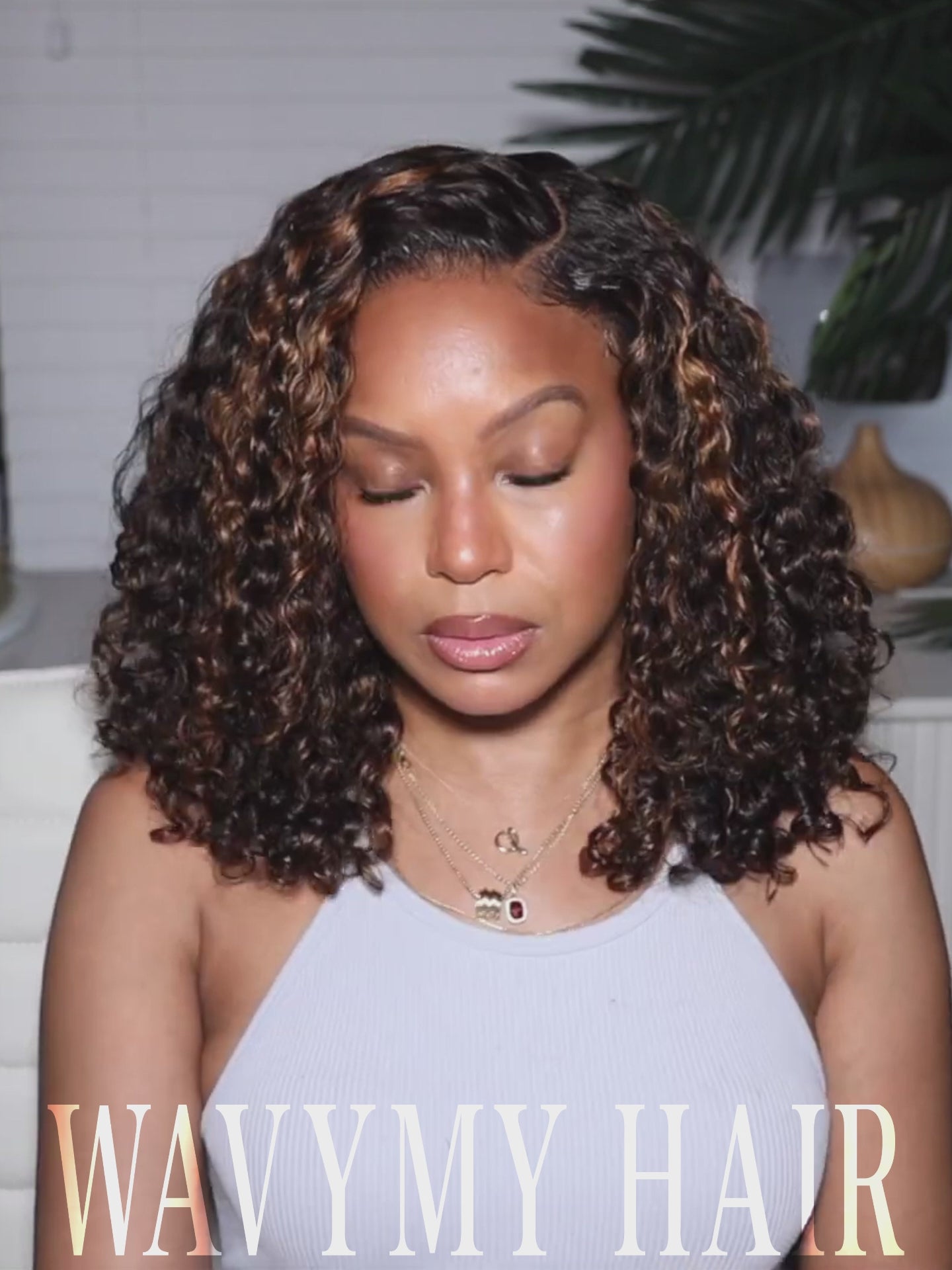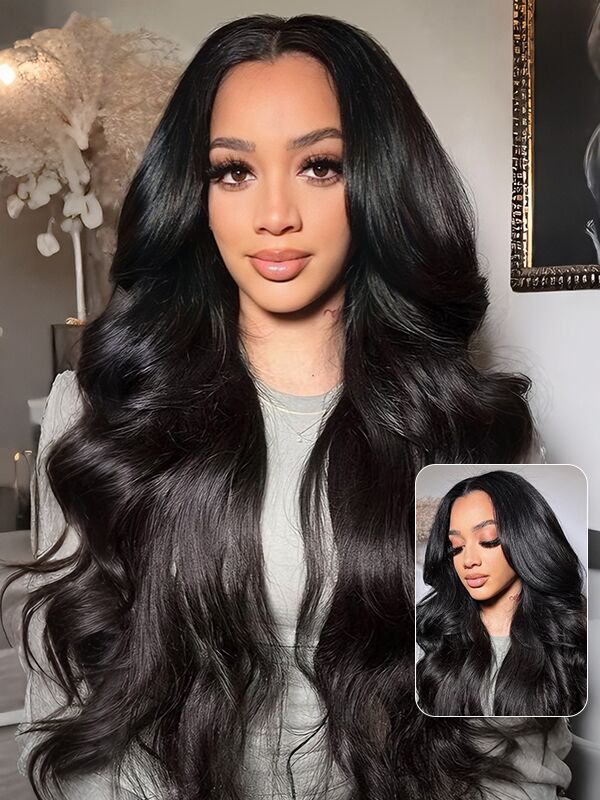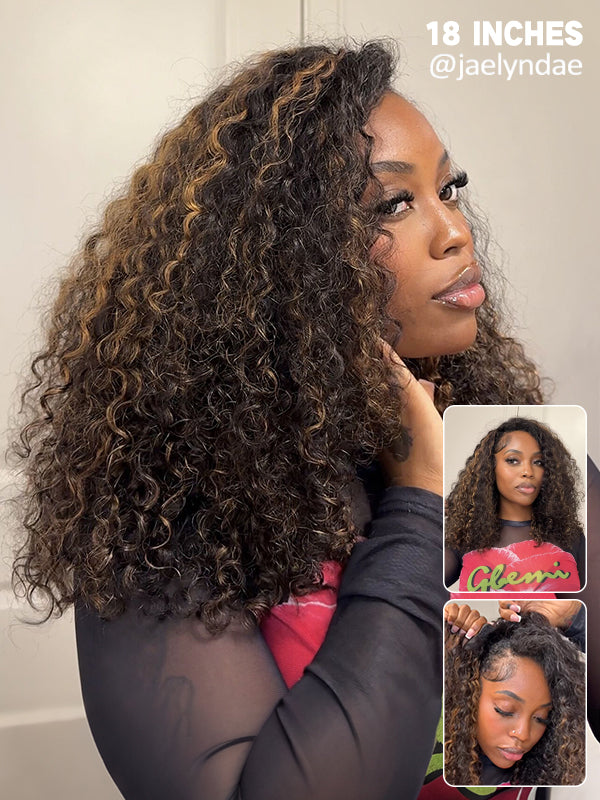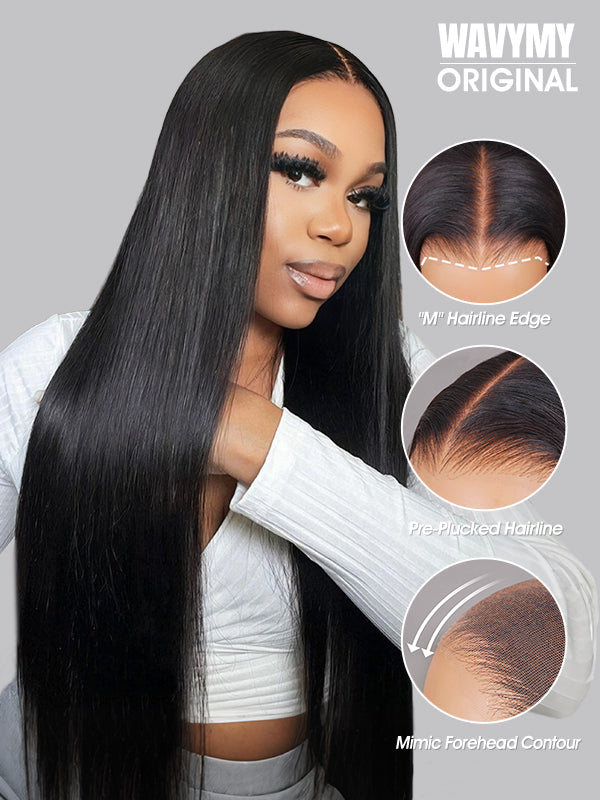Half wigs and headband wigs are two types of hassle-free wigs to change hairstyles in an instant without using tape, glue, or adhesive. But when faced with these two popular choices, some of you may find it difficult to choose one that suits you better. Half wig vs. headband wig, what’s the difference? How should you choose? Today, let’s explore these in more detail to help you make the right choice.
What Is a Half Wig?

The half wig, also known as half head wig, 3/4 wig, etc., covers a part of your head, leaving the uncovered part of your natural hair blended with the wig. It is designed to blend seamlessly with your natural hair, instantly adding hair length and volume. There are many types of half wigs available in the wig market that provide coverage of different areas to give you more options.
What Is a Headband Wig?

The headband wig, as its name implies, is a wig with a stretchy headband attached to the front edge of the wig cap. Usually, the headband wig is installed through a Velcro headband and three combs, no glue and no leave-out is needed. A headband wig provides full coverage and protects your natural hair from chemical and heat damage.
Half Wigs vs. Headband Wigs
| Feature | Half Wig | Headband Wig |
| Cap Construction | Covers part of the head | Full cap attached with a headband |
| Installation | Glueless, requires leave-out to blend with natural hair | Glueless, headband covers the front, no leave-out needed |
| Natural Look | Can be extremely natural if blended seamlessly | Natural-looking, decorated with a headband |
| Comfort | More lightweight and breathable | Breathable and snug |
| Protective Style | Partially protective | Fully protective |
| Styling | Leave-out allows the forehead hairline and various hair partings to show | Various headband or scarf hairstyles |
Pros and Cons of Half Wigs
Pros
-
Supernatural if your natural hair blends seamlessly with the wig
-
Partial-coverage cap construction makes the wig more lightweight and breathable.
-
Leave part of your natural hair to expose your natural hairline
-
Less heat, sweat, and natural oil buildup make the wig very suitable for hot weather
Cons
-
For effortless and seamless looks, you should choose the same hair color and texture as your natural hair
-
Require heat styling and blending if you choose a textured half wig that is different from your natural hair
-
Not suitable for people with very thin hair and severe hair loss because they don’t have enough hair to create a seamless blend
Pros and Cons of Headband Wigs
Pros
-
Full-coverage cap construction provides full protection, no leave-out needed for blending with the wig
-
Velcro headband and three combs to achieve the glueless installation, protect the forehead hairline, and give a snug fit
-
Can wear different headbands or scarves to match your makeup, accessories, and clothing
Cons
-
The headband is always visible and is only suitable for headband hairstyles, which is less versatile than other wig types, like wear and go wigs, skin lace wigs, HD lace wigs, etc.
-
Less styling flexibility than other full wigs, no lace area or leave-out for natural hair partings
-
Need headbands or scarves that are wider than the Velcro headband to wear on the wig
Half Wigs vs. Headband Wigs, How to Choose?
Choose a Half Wig
💜Only want to add hair length and volume
💜Like to leave bangs out to blend with the wig
💜Want to expose the natural hairline to create a super realistic look
💜Prefer a more lightweight and breathable wig that does not easily feel stuffy and hot
Choose a Headband Wig
💜People with thin hair or hair loss who want a full protective wig
💜Have a wide collection of headbands and scarves, and really fancy headband hairstyles
💜Want an easier and faster wig that you don’t need to style and blend the leave-out with the wig
💜Don’t want to worry about matching the texture or applying heat for a seamless blend
Conclusion
The key to choosing a half wig or headband wig depends on personal needs, and the precondition is that you should understand the key features of them and the differences between them. If you pursue the realism of your hairstyles and natural blend effect, a half wig is a good choice. If you prefer a fully protective wig that can be quickly installed and add a stylish touch to your hairstyle, a headband wig can better meet your needs.
Related Posts:
Half Wig vs. Full Wig: What Is the Difference










